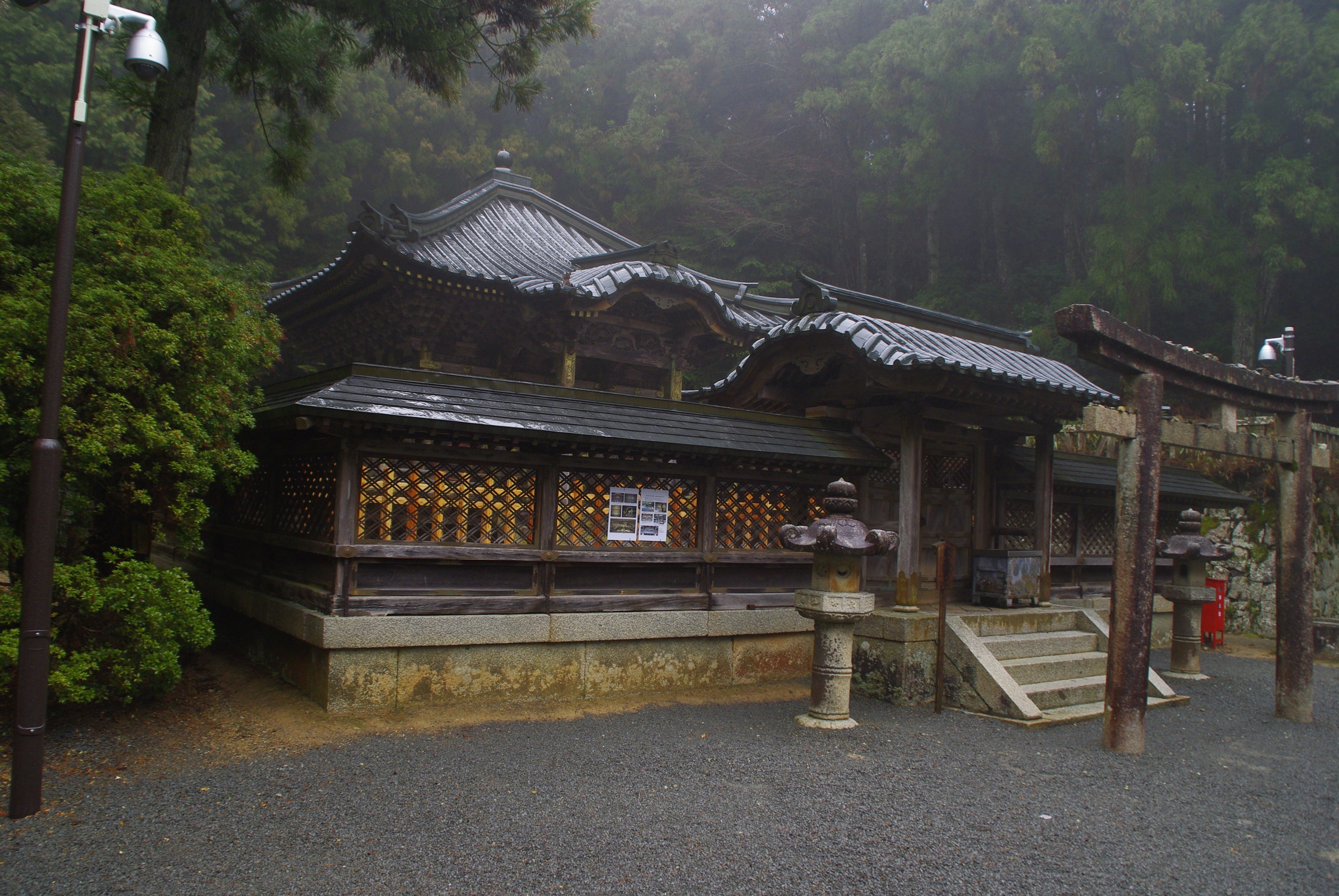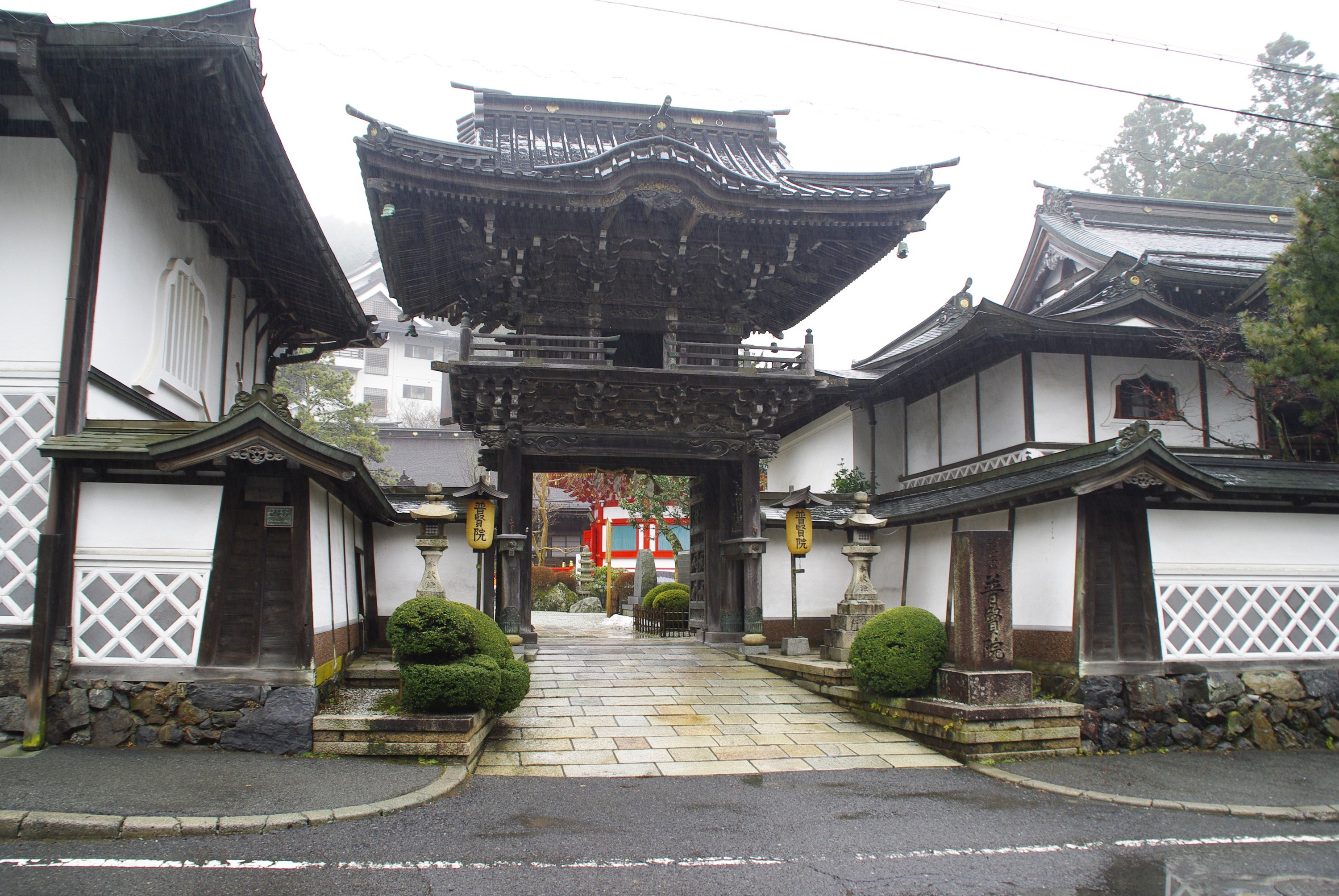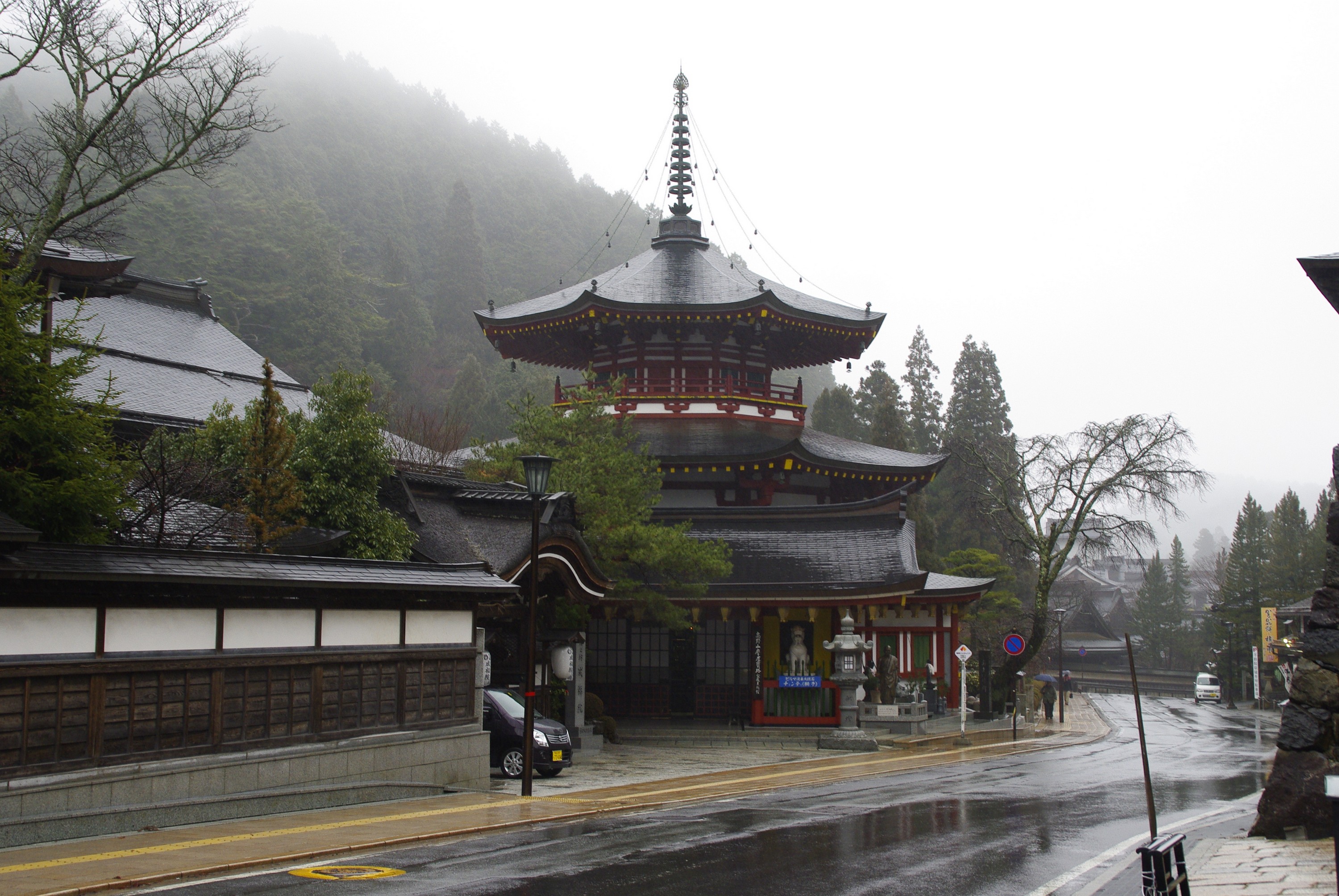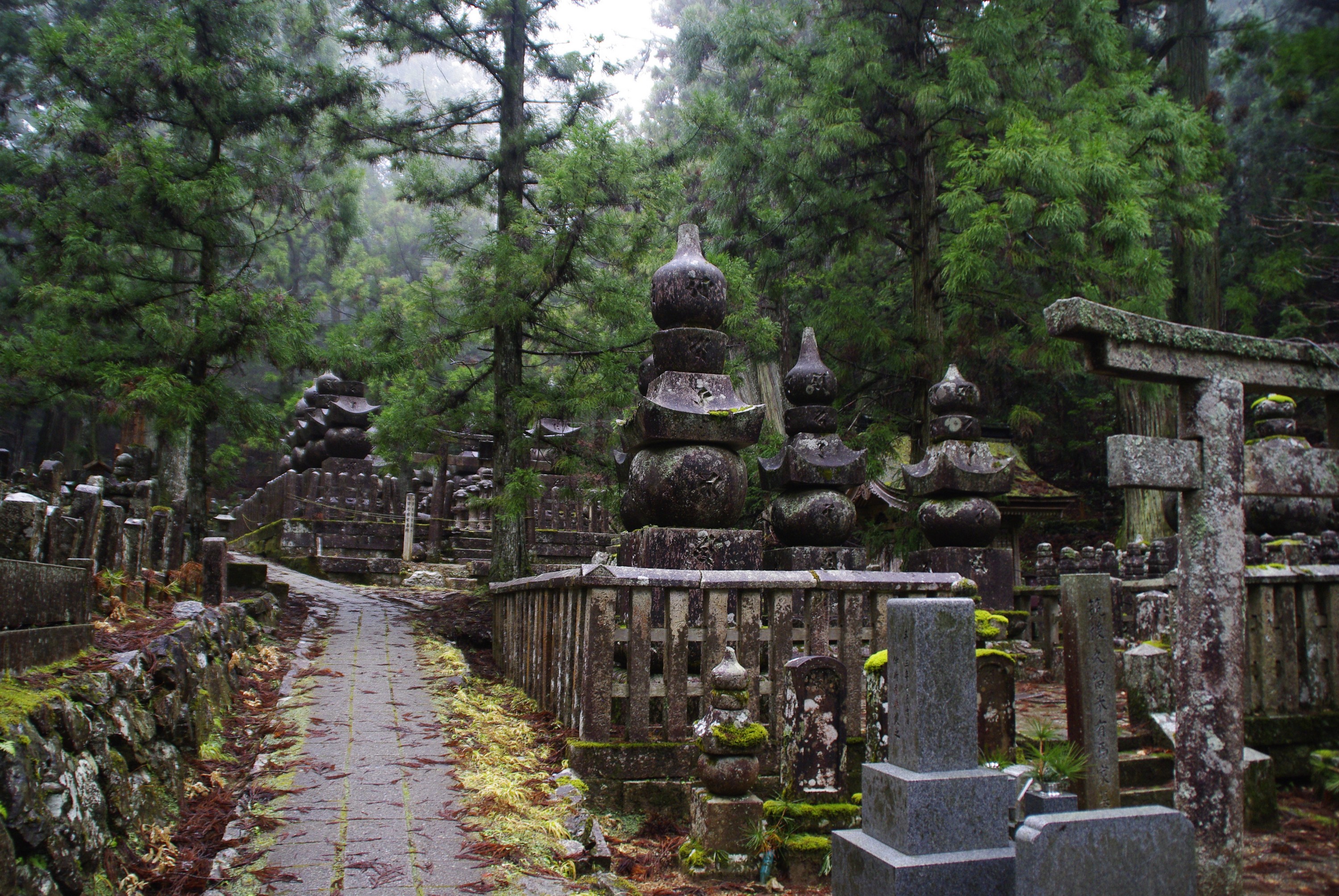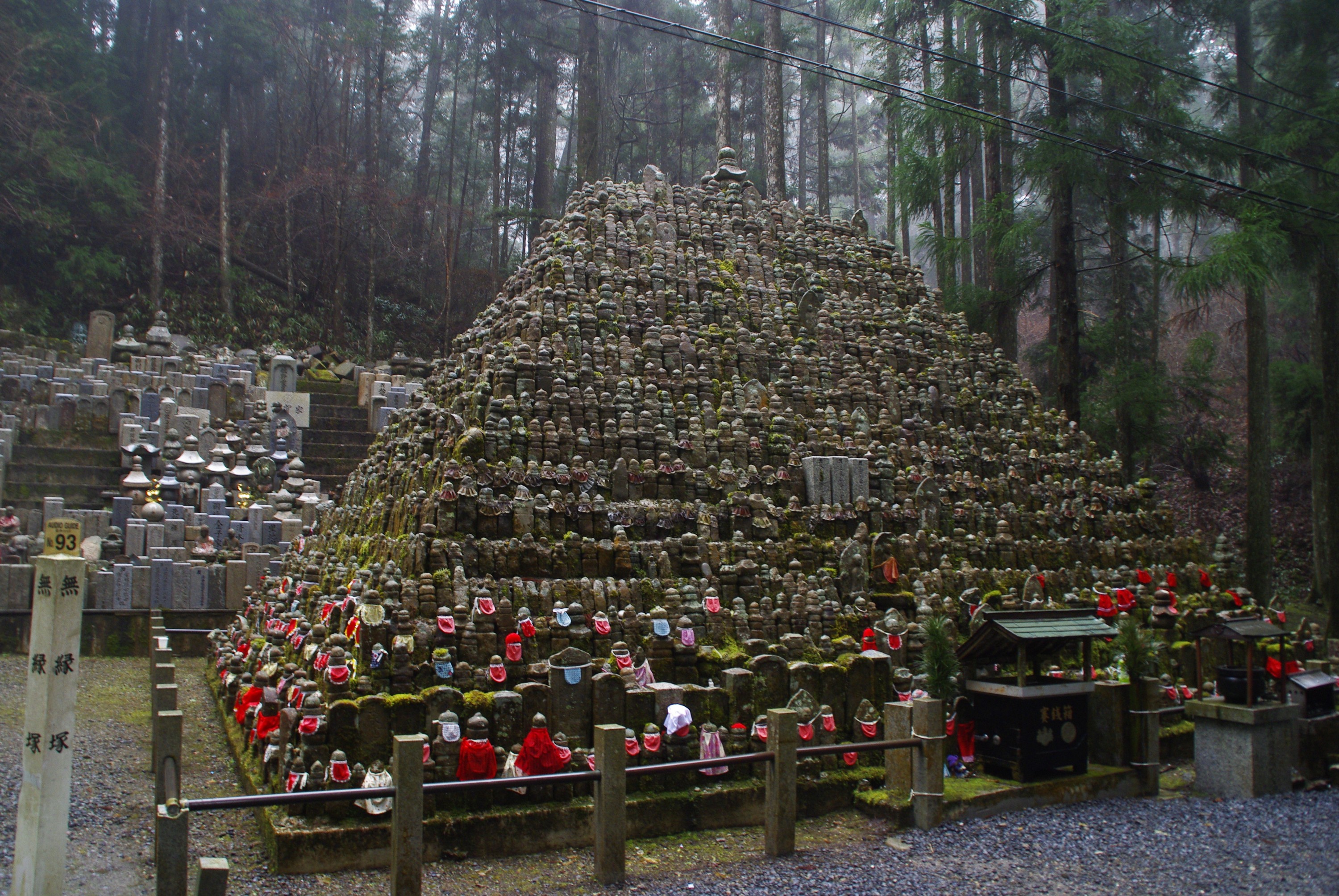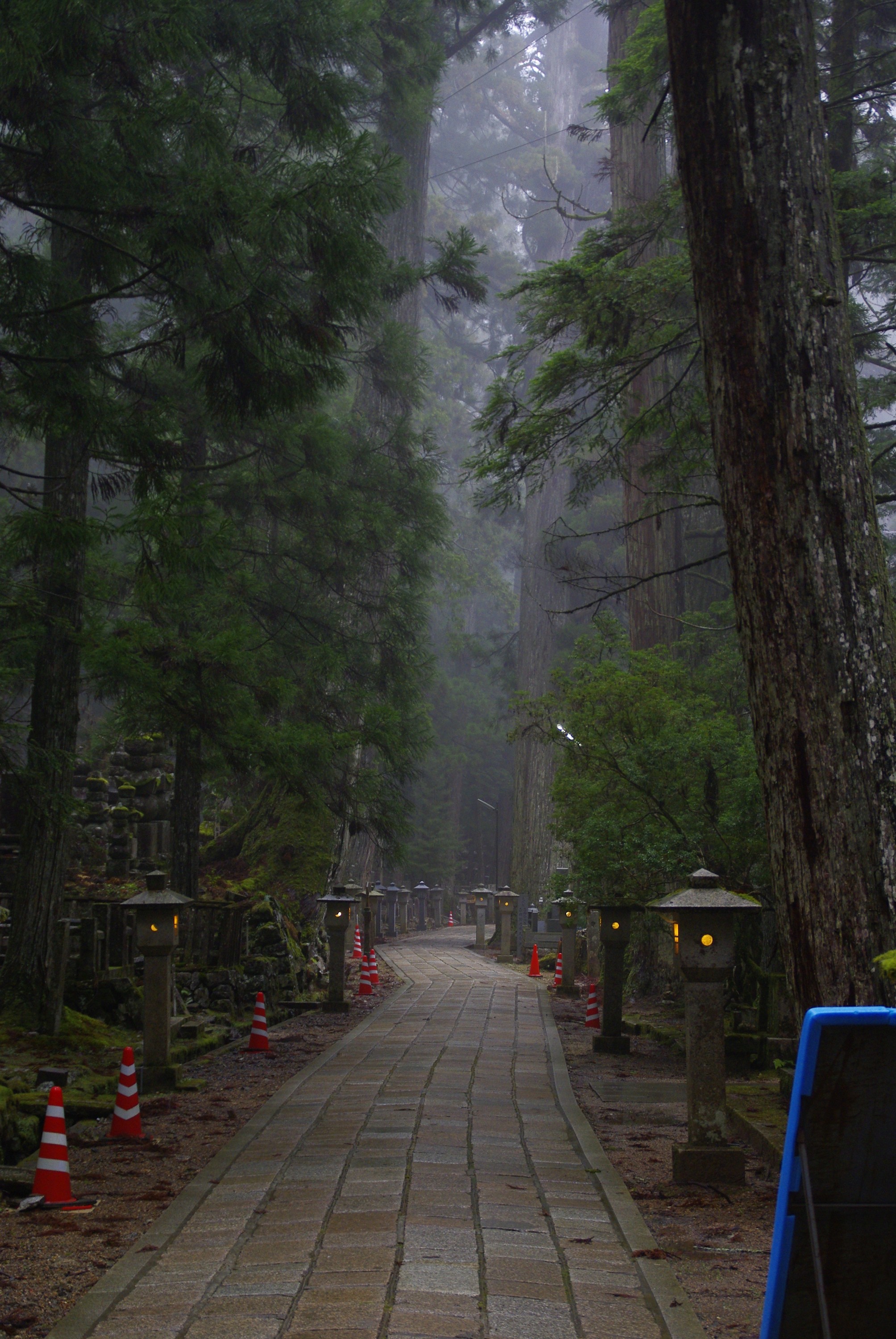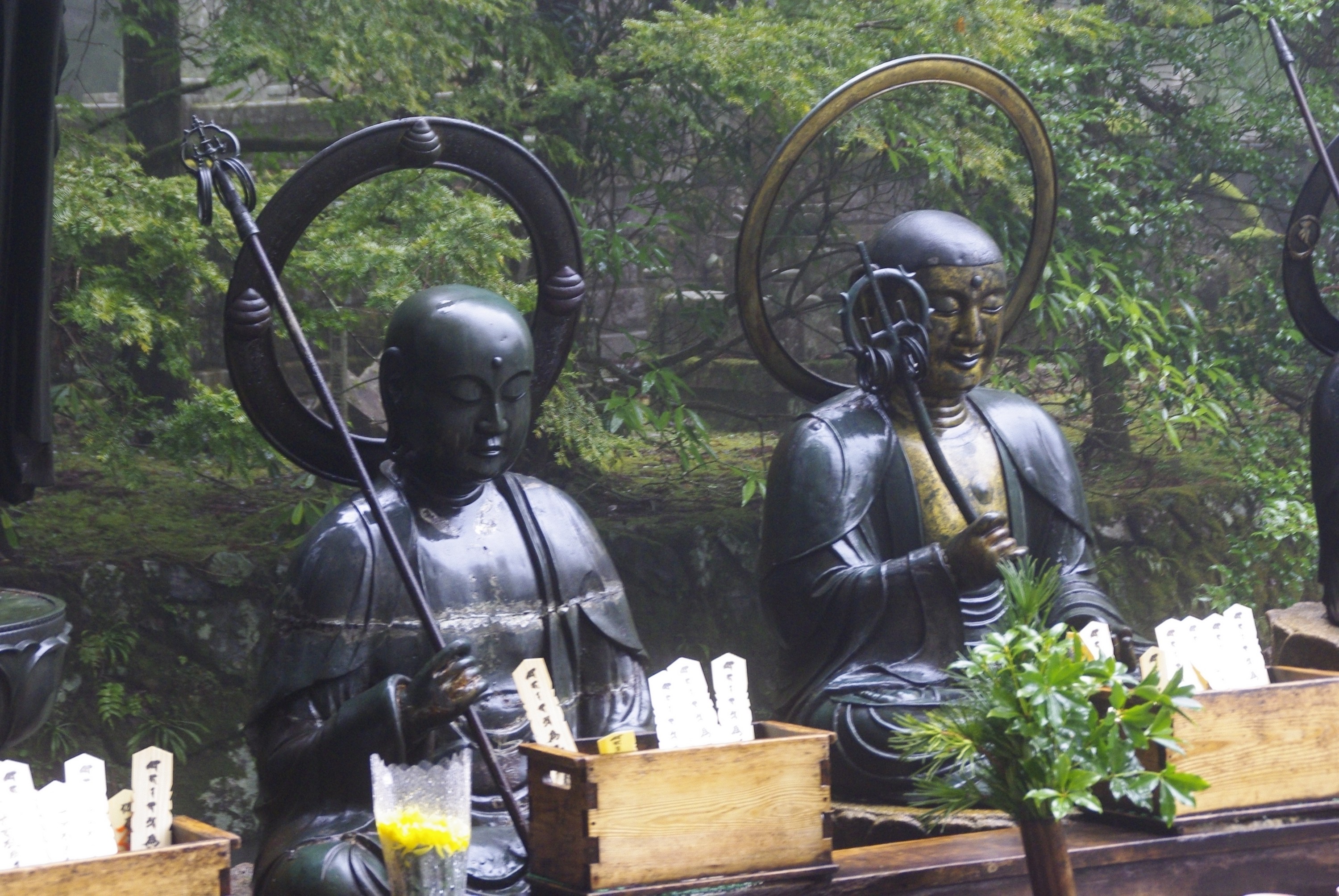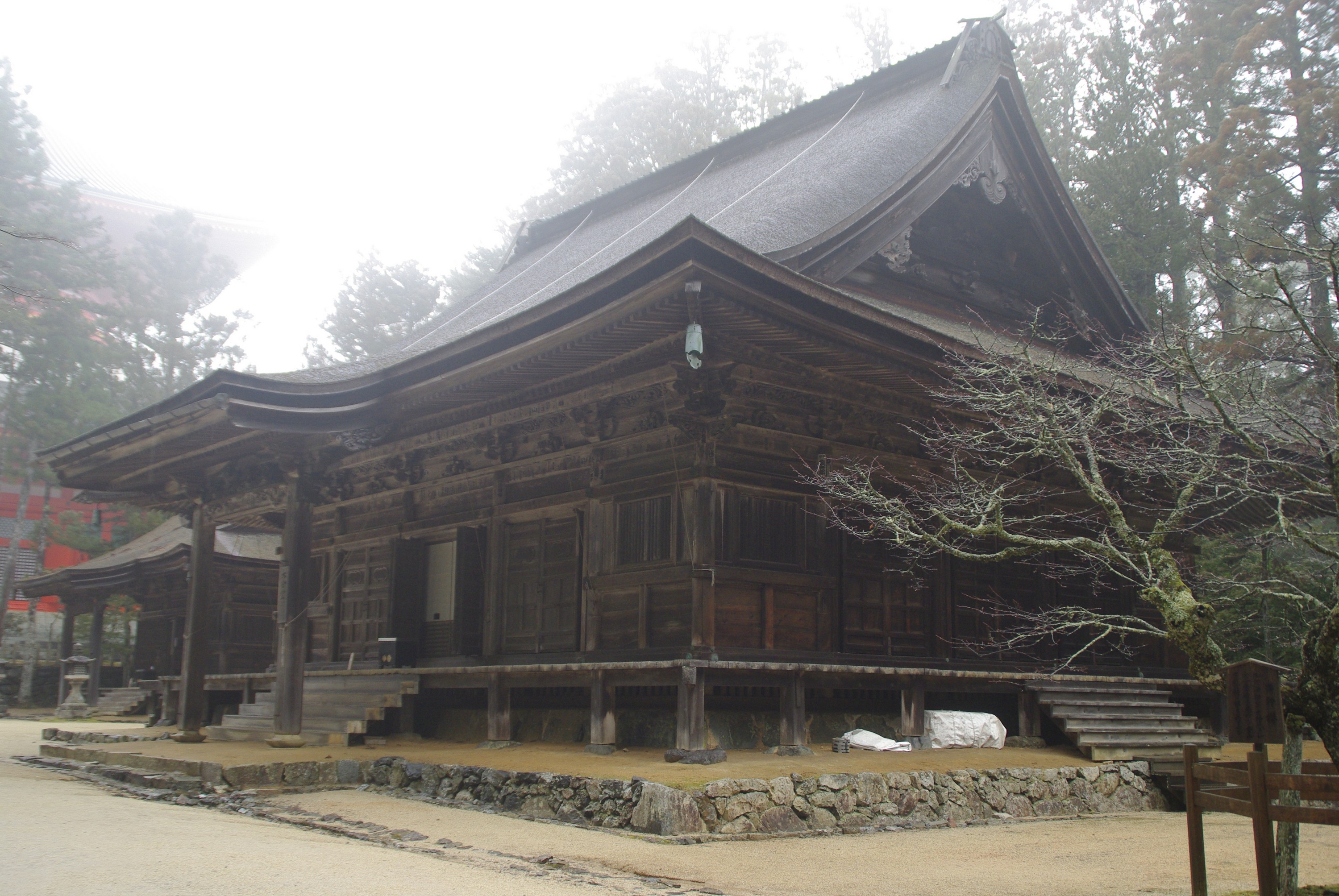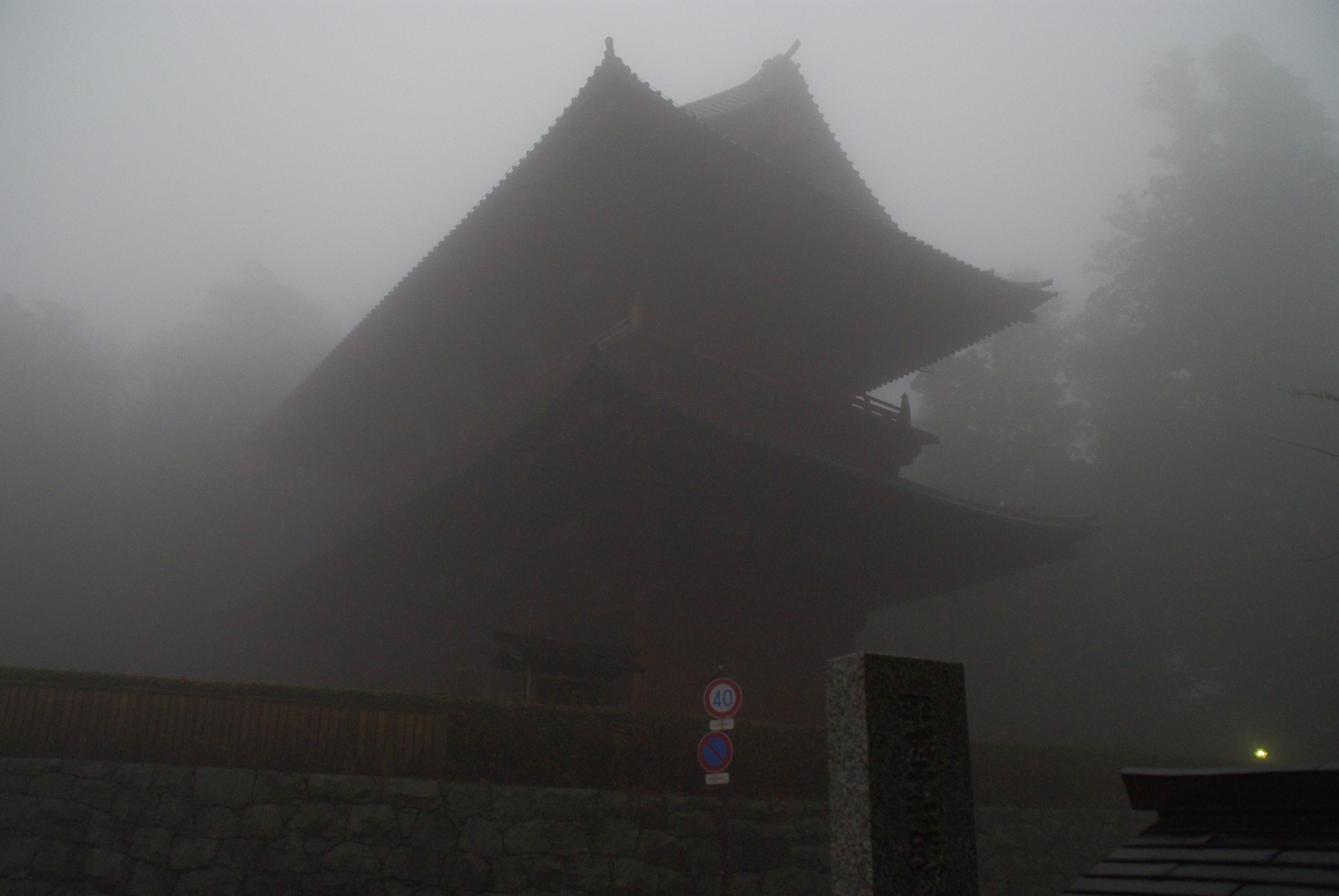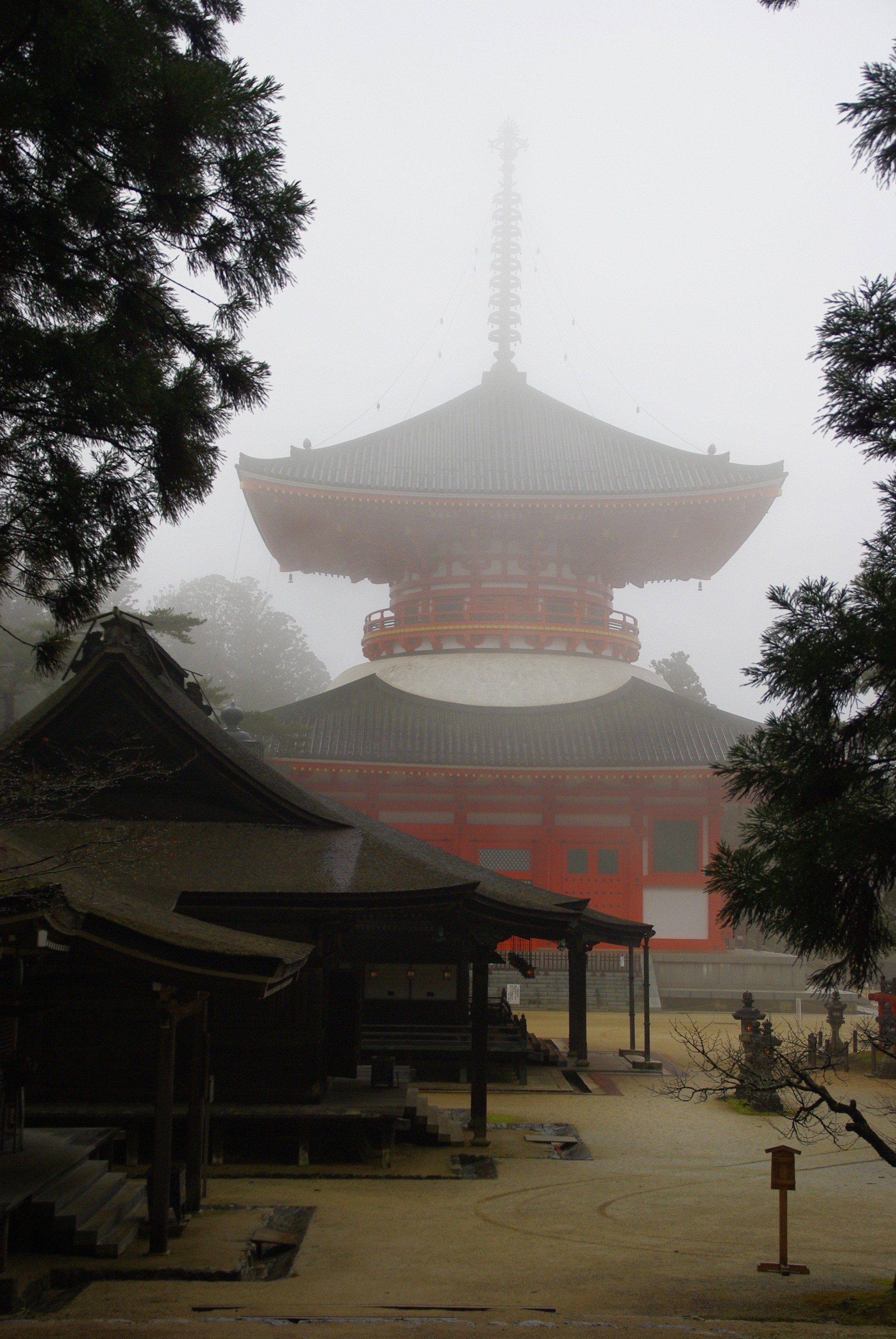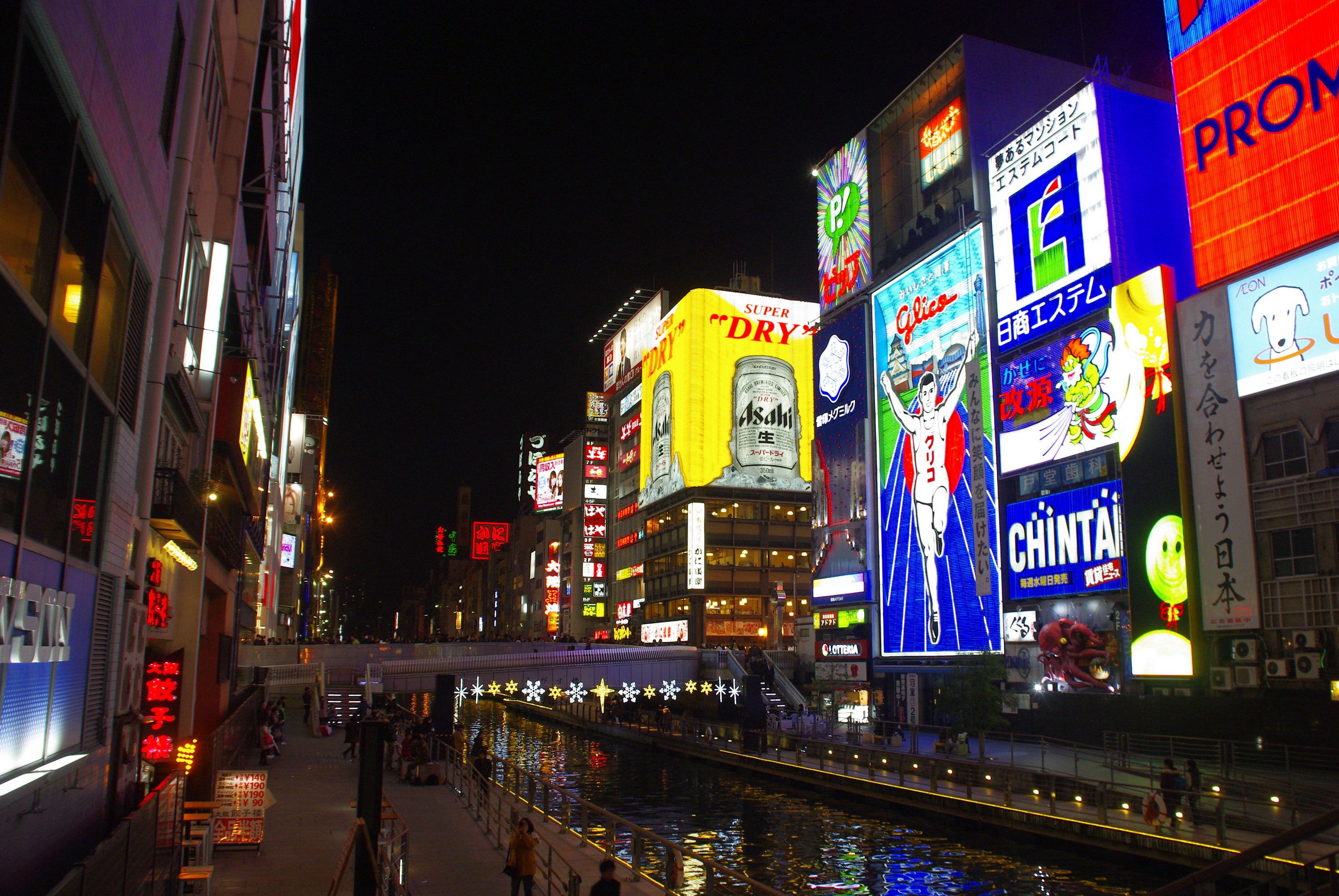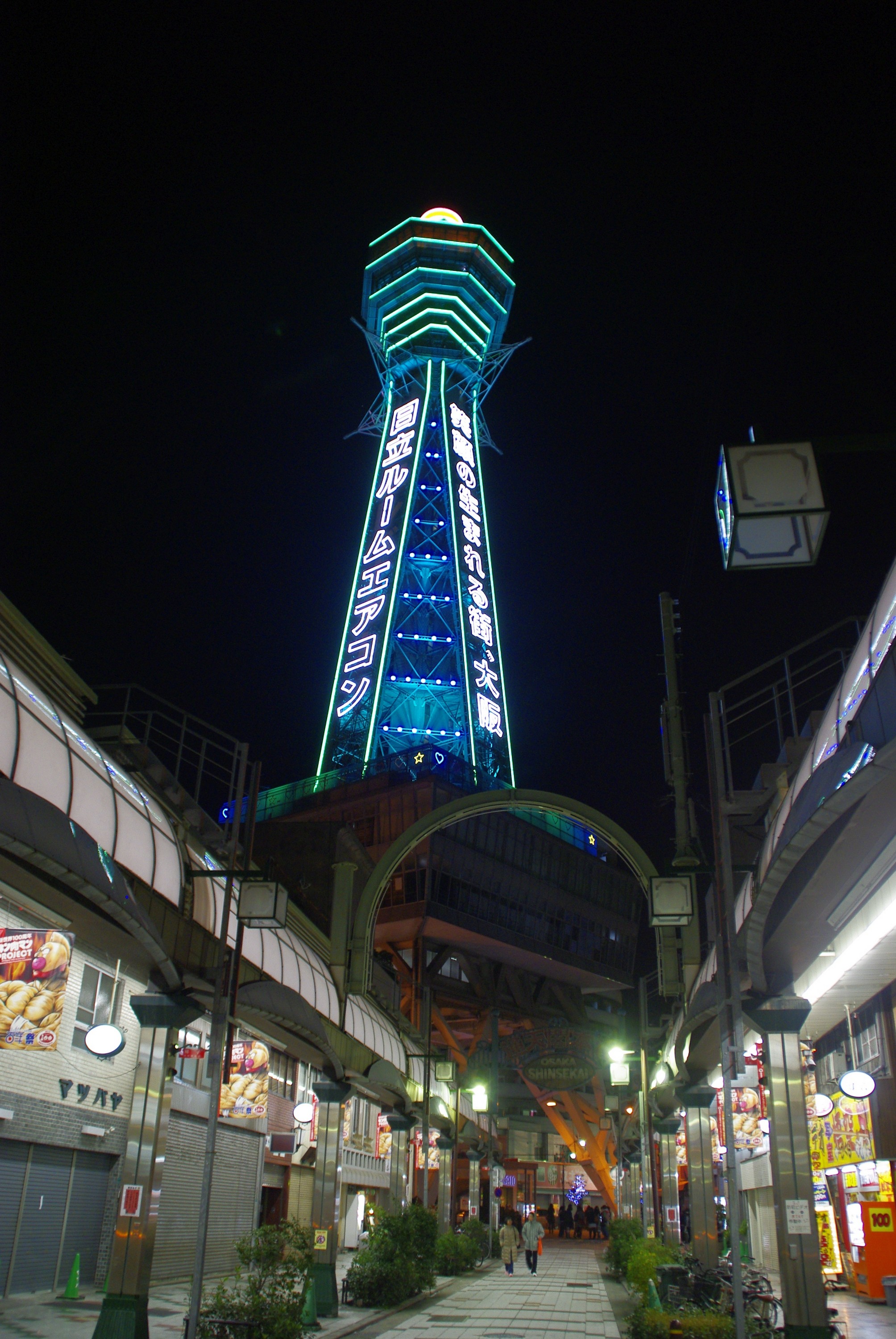With breakfast from a 7evelen I start the ride with the Loop Line. After two stations I change into the Koya-Nankai-Line. This time the gates are clearly seperated. Even with Kansai Pass I have to pay a Ltd. Express fee. From the second last station Koyashita the train tracks are winding uphill; rock on the left, abyss to the right. It is a mystic atmosphere, fog is hanging in the trees.
For the last mile I have to use a cable car. The thermometer is showing 46°F. Upstairs it is fallen to 39°F. The next half mile is a compilation of curves and pedestrians are not allowed. Fog everywhere. To be precisely: clouds. And I am inside. Drizzle. It is cold.
Koyasan 1
I take the bus and get off at the Tokugawa Mausoleum. Looks good. A nice beginning. It starts to rain. I walk to the city center, passing several temples. There are more than 100. In ancient times there were over 1000. Koyasan is looking like a cozy little town.
I reach the beginning of the forest track Sando. It leads to the most important temple, Torodo. The whole forest is a graveyard with thousand of tombs, stone columns and Stupa. The are weathered; covered with moss. High cedar trees, drizzle and a little bit of fog. The perfect atmosphere for this place. Here the time has stopped.
Behind the bridge no cameras are allowed. A monk is giving me some powder that I have to rub into my hands. An incense. He also gives me a small package to take it home. Here are only monks, pilgrims and I. This is like the end of the modern world and the beginning of the spiritual.
The main hall is impressive. I would like to take some pictures but I respect the rules. I embrance the moment. I hear chanting. Next to the main hall a smaller one with hundreds of iron lantern hanging from the ceiling. Where is the Okunoin? I ask a monk. I have to enter the temple, turn right. It is behind the sliding door.
Koyasan 2
I take a taxi back. Next stop Kongobu-ji. No shoes. At 39°F. That is mean. There are many rooms with sliding doors with zen-paintings on them. The corridor is a leading to a big hall with tatami floor. There is a small stone garden between the buildings. Tea is served. Behind the hall is another bigger stone garden.
The next point in my list is the Jakai. This is no temple. It is a buddhism ritual at the Daishi Kyokai temple. There is some time left before it starts, so I go to the museum around the corner. Acient scrolls and pictures. No I have to hurry. I forgot my umbrella. Back to the museuem. I am back on time but I am the only one. Ups.
I monk is asking my name. I follow him into the main hall. We are passing the golden Buddha statue and enter the „off limits“ area into a hall. It is dark. No light but two candles at the altar. I sit down at the tatami mat. A monk is closing the sliding doors. The priest is entering and sitting down in front of me. I only see his silhouette. Drums. Chanting. Chimes. The Jukai starts with a Mantra. Then I have to repeat his works. Aiyee. Now my japanese knowledge is needed. A monk is repeating with me. That is a lot of help. I syncronize with him. Then I have to step forward. The priest is giving me a envelope. Another mantra and it is over. Impressive ritual. Nothing special but powerful. A special holiday experience. The Jukai vow!
Koyasan 3
The fog is vanising. Koysan is loosing some of its mysticism; I need more fog. Sadly enough that there is no snow. It was a good idea to do the Sando first. Without the fog it would only be a pathway in the forest. The last stop on my list is the Danjo Garan; a pagoda (Konpon Daito); Huge. 157ft. There are three „smaller“ one. Also the Kondo, the big hall, is really big. The entrance is closed. A warning sign. Snowslides from the roof. Damned. Looks like the had plenty of snow a few days ago. I visit the inside of the pagode before the close. Dawn is starting. The fog is back. A lot of fog. Hard to take pictures. My tripod is still in Tokyo.
There is time left to visit the daimon, the big entrance gate to Koyasan. It really is dai = big. The roof ridge is hidden in the fog. The exposure time is on its limit. No more pictures without a tripod. Now it is dinner time an the then the ride back to Oosaka. The last open resto is next to the bus station; Tendon; Sake; Souvenirs.
Bus, ropeway and train are coordinated perfectly. This is Japan. I leave Koyasan behind me in the mystic fog. 2 hours later Namba, Oosaka. What a contrast. Neon lights. People everywhere. Sky scrapers. Loud and hectic. Amusement. The combination of food, drinks and women (optional). I discover a small booth on the street with Takoyaki. Looks like a gaijin like me was not expected. The is not the typical tourist street and food supply.
On the way back to the ryokan I do a small diversion to the radio tower, the landmark of Oosaka. No anime in Oosaka without a reference to this tower. Green illuminated. They want to tear it down but the people of Oosaka stopped the project. On the way back I have a feeling of dejavu. Maybe I walked this way in 2004.
[P.S.:i took a picture at the train station in Oosaka. A departure every 4 minutes. This is only possible if trains are on time. Not possible in Germany. For the Deutsche Bahn a delay of 15 miuntes is still „on time“. In comparsion the japanese rail network is a swiss clock. The time table for the train driver is listing seconds for the departure time. No kidding.]

